Hey there aspiring geoscientists and storm chasers! Get ready for a wild ride as we explore the natural disasters that plague Montana.
Behind Montana’s beauty lies a history of severe droughts, massive landslides, raging floods, and destructive earthquakes that shaped its geography.
Today, we will examine the different forms of nature’s wrath as they wreak havoc on Montana’s land and people.
We will also address notable disastrous events and the consequences of their destructive power, as well as their impact on the state’s disaster measures.
- Related article: Why Is Montana So Popular
Does the prospect of that thrill you? If yes, suit up and ready your emergency gear and supplies as we take on the wild and unpredictable world of Montana’s natural disasters.
Montana’s Risk for Natural Disasters
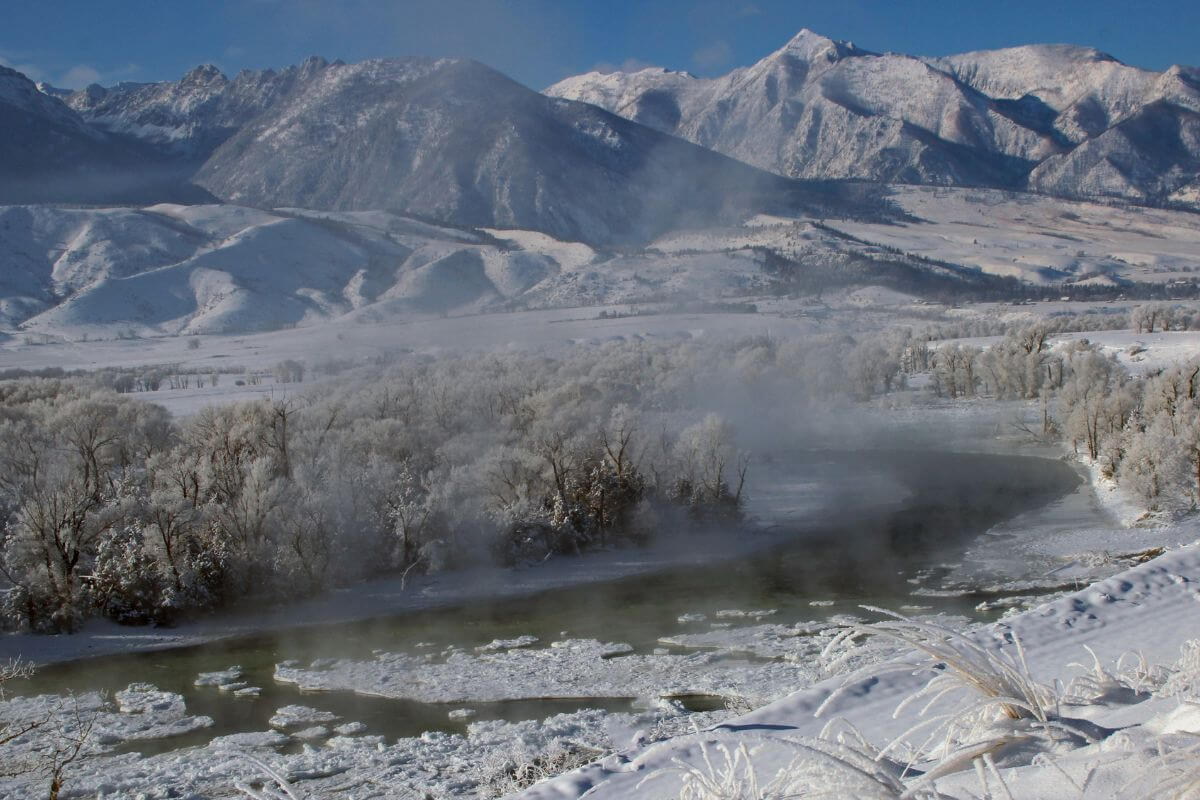
With its unique geography and fluctuating climate, Montana is not without its share of natural disasters.
According to the Federal Emergency Management Agency (FEMA), Montana declared a staggering 72 major disasters between 1953 and 2019.
The most prevalent among them were forest fires and floods. The state experiences significant wildfire activity, especially in forested areas, during hot and dry periods.
Ice jams, snowmelt, and heavy rainfalls make the state especially prone to flooding.
Moreover, Montana is no stranger to severe storms, including blizzards and tornadoes, that can occasionally sweep across its vast expanse.
These can lead to treacherous travel conditions, power outages, and disruptions to infrastructure.
Montana’s location within the Intermountain Seismic Belt, a region dotted with seismic hotspots, makes it moderately prone to earthquakes of varying magnitudes.
Montana takes its disaster preparedness and mitigation measures seriously, constantly keeping up-to-date with disaster guidelines and emergency plans.
In doing so, Montanans can appreciate the beauty of this magnificent state while staying safe and secure.
Common Natural Disasters in Montana
The natural forces that have shaped Montana are truly remarkable despite their terrifying destructive power.
From forest-leveling wildfires and massive landslides to earth-shattering quakes and devastating floods, Mother Nature unleashes a myriad of disasters that test the resilience of Montana’s land and people.
1. Montana Wildfires
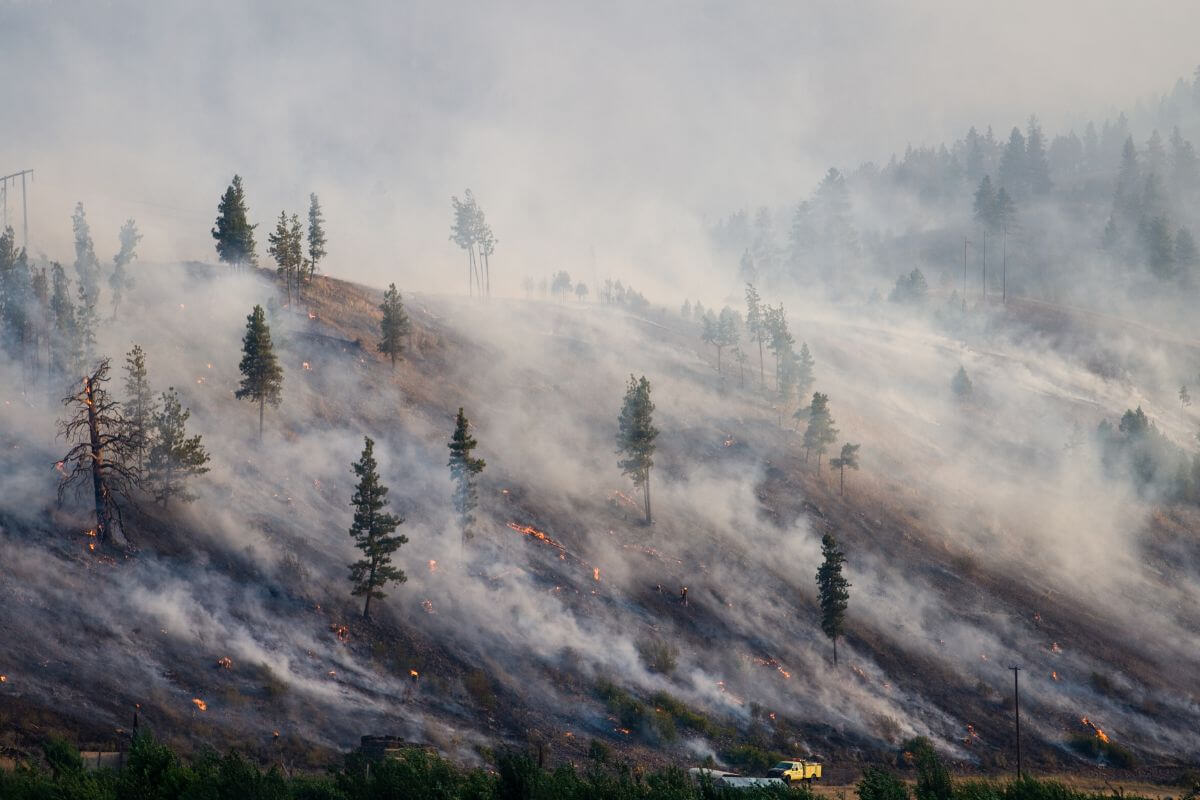
Persistent wildfires eat away at Montana’s breathtaking natural beauty with each passing year. While they are a natural part of the land’s ecology, the uncontrollable nature of fires makes them potentially catastrophic.
Case in point: The Great Fire of 1910, a historic wildfire that tore through Montana, Idaho, Washington, and even British Columbia, consuming everything in its path.
That year 1910 witnessed unusually dry weather conditions, providing the perfect environment for the fire to spread rapidly.
Montana wildfires have burned millions of acres of land. In 2017, for example, the total acreage consumed by the flames exceeded 1 million acres.
The danger of wildfires is not limited to the environment alone. Homes, outbuildings, and other structures are laid waste by their destructive force, particularly in wildfire-prone communities.
The economic impact of wildfires in Montana is substantial. Timber resources are damaged, grazing lands for livestock are lost, and tourism and recreational activities are reduced.
Wildfires in Montana have resulted in significant environmental consequences, including reduced wildlife habitats, heavy soil erosion, polluted air and waterways, and an overall decline in ecosystem health.
The state’s wildfire risk stresses the importance of safety guidelines and community preparedness.
By having sufficient access to wildfire resources and staying informed, communities can take the necessary steps to mitigate the impact of this common disaster threat on properties and communities.
- Learn more about Montana’s Wildfire Situation
2. Montana Earthquakes
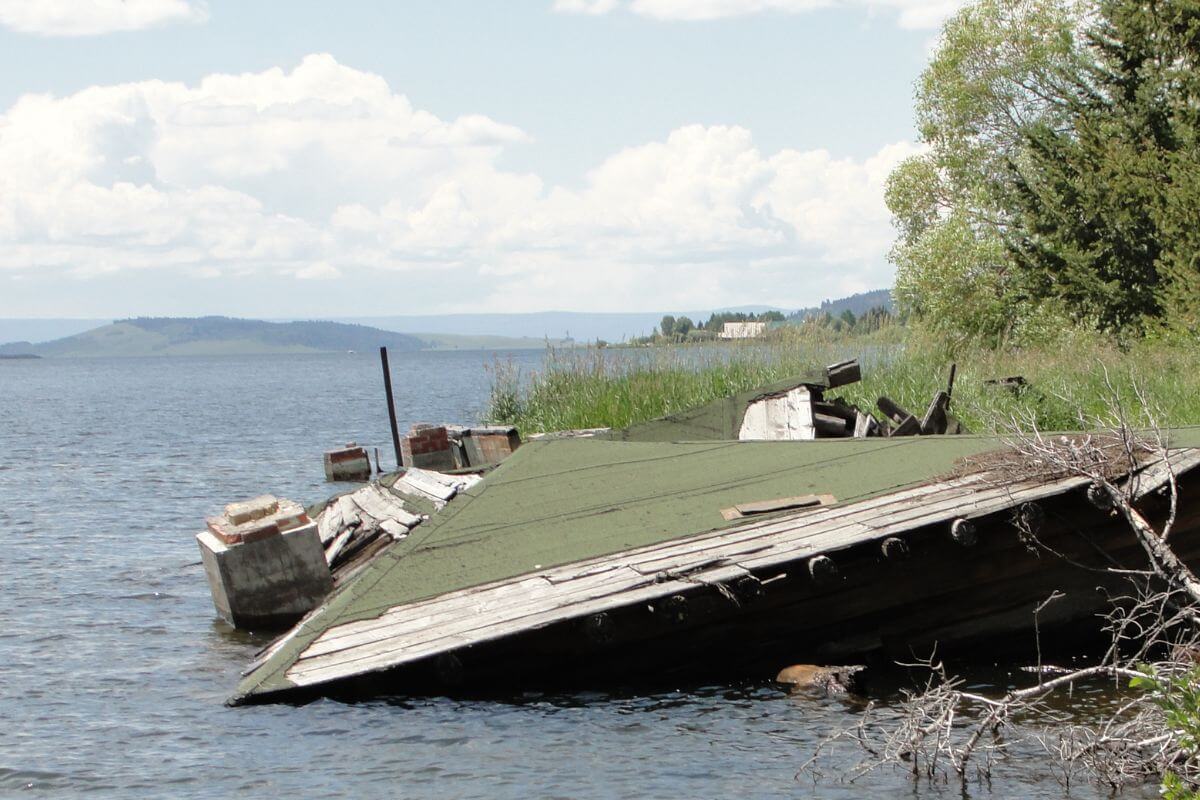
Seismic activity is a part of Montana’s natural landscape. Its location within the Intermountain Seismic Belt means there is no arguing with this fact.
Montana has experienced its fair share of historic earthquakes, none of them more notable than the Hebgen Lake earthquake of 1959.
Registering at an earth-shattering 7.3 on the Richter scale, it caused numerous fatalities and extensive property damage.
But despite Montana’s seismically tainted past, it presently holds an average earthquake risk score, and death during earthquakes is rare due to the implementation of earthquake mitigation strategies and the field of earthquake research.
At the helm of Montana’s disaster programs are the Montana Bureau of Mines and Geology (MBMG) and the United States Geological Survey (USGS).
They use a network of seismic stations to monitor earthquake activity in the state. They are also in charge of providing communities with valuable earthquake resources, such as guides and training videos, to help keep them ready and informed.
- Learn more about Montana’s Seismic Events
3. Montana Winter Storms
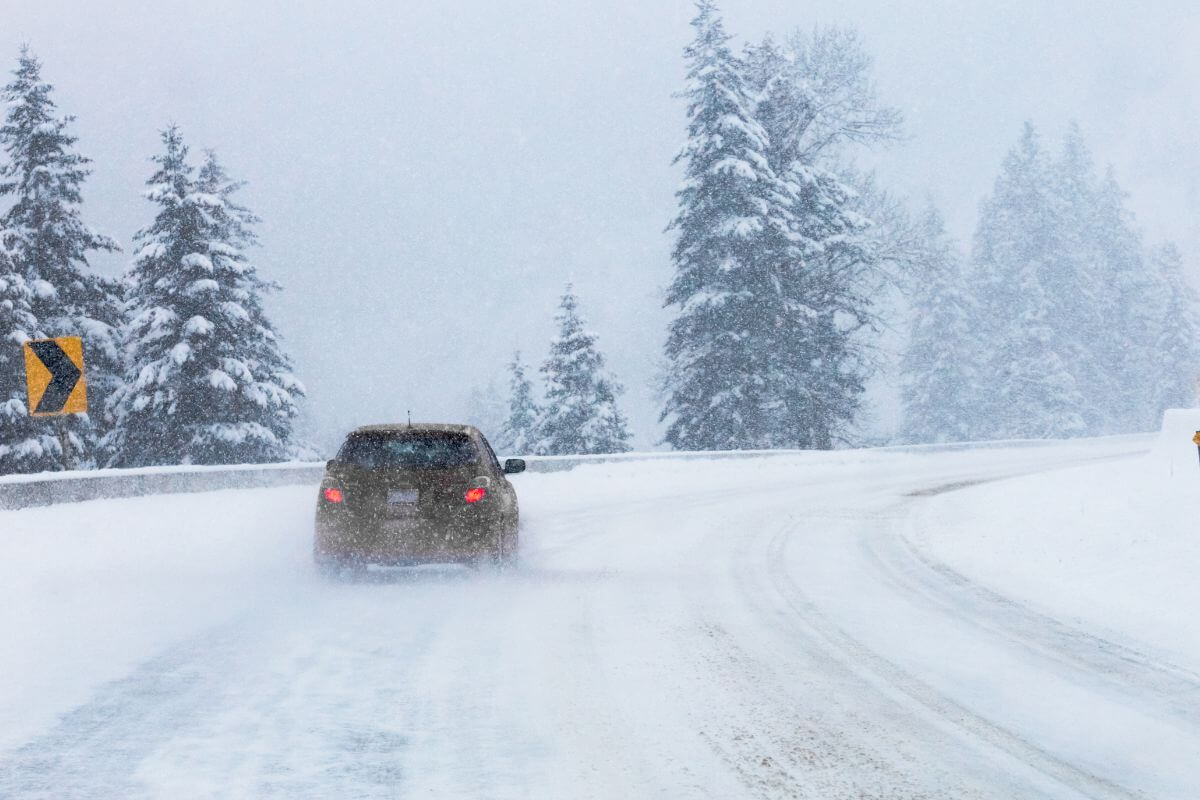
Severe winter weather conditions are things you get used to under the Big Country Sky.
Montana’s northern location and geography, including its majestic mountains, potentially bring about a range of winter storms.
The worst thing about this is that blizzards often accompany these bone-chilling events, amping up their danger levels significantly.
From the strong winds that impede movement to the heavy snowfall that reduces visibility, navigating the outdoors is nothing short of treacherous amid heavy snow storms.
And if that’s not enough, it comes with frigid temperatures will make you wish you’d stayed indoors, to begin with.
One of Montana’s most notable winter storms is the Blizzard of 1949, which remains one of the worst on record for the Montana Northern Plains. It was a historic natural event that brought punishing winds and endless snowfall to Montana’s communities.
The winter storms of Montana’s past have shaped the state’s winter safety procedures. They have prepared residents for the cold temperatures and tough challenges of the winter season.
4. Montana Landslides and Rockfalls

Landslides and rockfalls pose significant risks in Montana due to the state’s diverse geology and challenging terrain.
The presence of steep slopes and mountainous areas increases the potential for landslides, as gravity acts upon unstable materials, leading to slope failures.
Montana’s various types of rock formations and soil compositions further contribute to the occurrence of these natural disasters.
Heavy rainfall and rapid snowmelt can saturate the soil, reducing its stability and increasing the likelihood of landslides.
Additionally, natural processes such as freeze-thaw cycles and weathering of rocks contribute to rockfalls.
These rockfalls can be especially hazardous along roadways in mountainous regions, causing damage to vehicles and blocking road access.
Human activities also play a role in exacerbating landslide and rockfall risks. Activities like road construction, logging, and mining can loosen the soil and rocks, altering the natural landscape.
These alterations contribute to increased instability and make areas more susceptible to landslides and rockfalls.
The consequences of landslides and rockfalls in Montana can be devastating. These catastrophic events pose risks to infrastructure, property, and human lives; they can result in the loss of homes, road closures, and damage to utilities.
Montana has experienced notable landslides and rockfalls throughout its history, including the historic 1959 Madison Canyon landslide, one of the deadliest landslides in the United States.
Understanding the risks and implementing measures to mitigate their impact can help protect lives and property in Montana’s most susceptible areas.
5. Montana Droughts
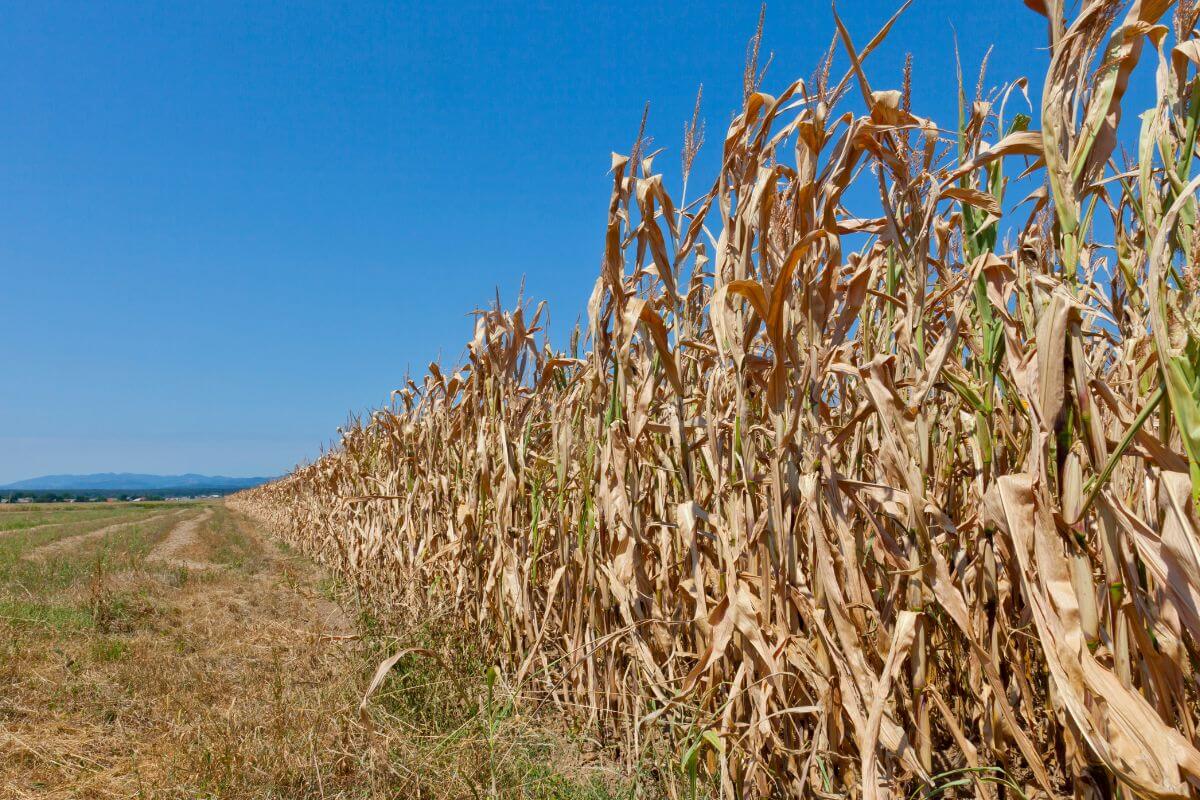
Drought is a recurring challenge that Montana faces due to its semi-arid to sub-humid climate, characterized by low precipitation and high evaporation rates.
Several climate factors contribute to the occurrence of droughts in this region, including the Pacific Ocean’s temperature patterns during climate events like La Niña and El Niño in particular.
These phenomena can impact precipitation patterns and temperatures, potentially leading to periods of drought in Montana.
The economic consequences of droughts in Montana are substantial. Key sectors like agriculture, forestry, and tourism can suffer from financial losses and job uncertainties.
Reduced water availability in rivers, reservoirs, and groundwater sources can be detrimental to agriculture, livestock, and municipal water supplies.
Additionally, prolonged droughts can severely impact natural ecosystems, resulting in diminished streamflow, disrupted wildlife habitats, and increased chances of wildfires.
That gives them the potential to become extremely expensive climate disasters.
Montana has experienced the harsh impacts of prolonged droughts in the past, particularly in the 1930s and 1950s, which significantly affected water supplies, agriculture, energy production, transportation of goods, and the overall balance of ecosystems.
As climate change continues to influence weather patterns, Montana must develop proactive strategies to mitigate and adapt to the challenges posed by drought.
6. Montana Floods
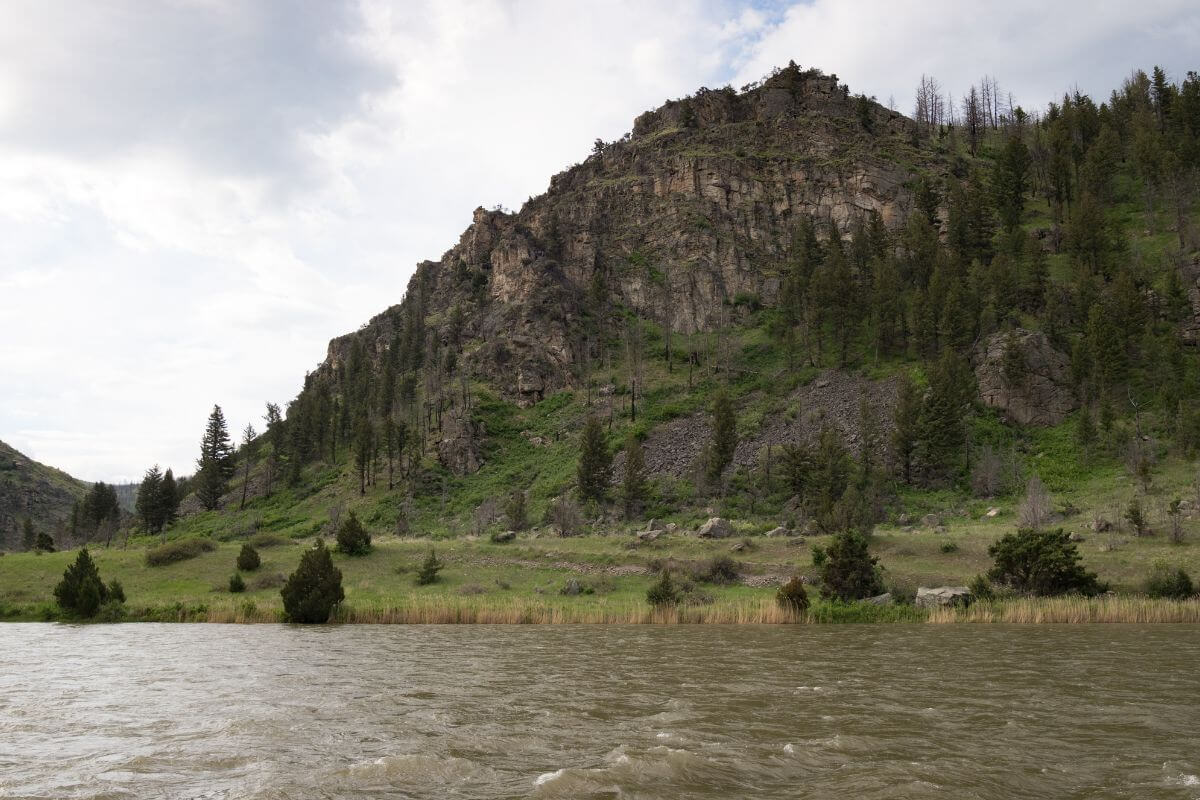
Floods in Montana are a natural disaster that can wreak havoc on the state’s diverse geography.
With its rivers, lakes, and mountainous regions, Montana’s topography can contribute to rapid water runoff during periods of heavy precipitation, exacerbating the risk of flooding.
One significant factor leading to spring flooding in the state is the combination of snowmelt, rainfall, and frozen ground conditions.
As temperatures rise during the spring months, snowmelt can result in increased river flows, putting areas adjacent to rivers and streams at risk of flooding.
Montana has a history of devastating floods. In 1964, the state experienced a historic flood that affected multiple river basins and caused extensive damage to infrastructure, homes, and agricultural lands.
The Great Flood of 1908 is another notable event when the Clark Fork and Blackfoot Rivers saw their greatest flood in recorded history, wreaking havoc on western Montana.
Several major waterways in Montana are particularly prone to flooding due to their size and extensive drainage basins. The Yellowstone River, Missouri River, and Clark Fork River have all experienced significant floods in the past.
To combat the threat of flooding during flood season, Montana has implemented various flood control measures.
This includes infrastructure improvements, such as levees and flood control structures, comprehensive floodplain mapping, early warning systems, and community preparedness initiatives.
Engineers, emergency officials, and local authorities work together to identify risk-prone areas, establish evacuation routes, and educate residents on flood preparedness to help ensure better handling of future floods.
7. Montana Tornadoes
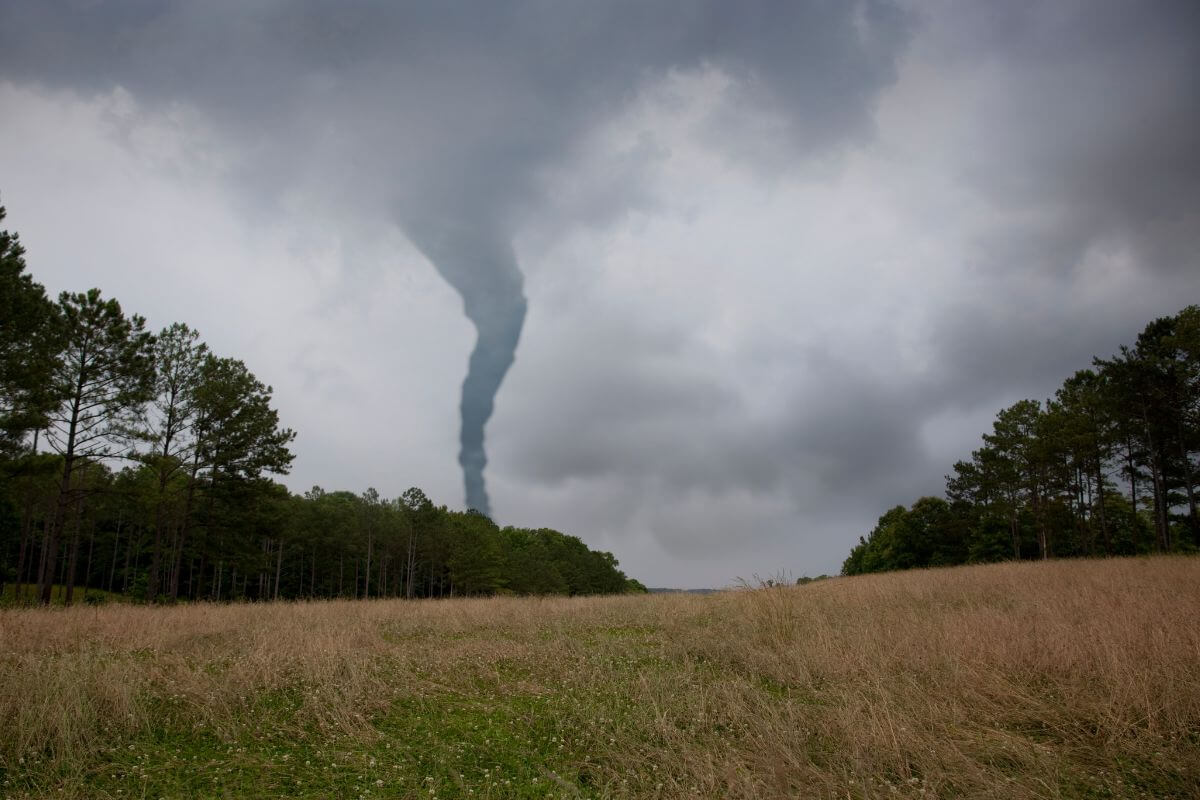
Tornadoes and hurricane-like winds are not a common occurrence in Montana, but they can still pose a threat to the region at any time.
According to historical data from the National Oceanic and Atmospheric Administration, Montana experiences an average of around 5 to 10 tornadoes per year.
These tornadoes typically range from EF0 to EF2 on the Enhanced Fujita scale, meaning they don’t have the strongest wind speeds.
While the wind speeds may not be as intense as tornadoes in other parts of the country, it’s still important to understand the potential dangers and damage that heavy winds can cause.
Fortunately, Montana’s relatively low population density and vast open spaces often mean that tornadoes impact unpopulated areas or rural communities, resulting in fewer injuries and less property damage compared to more densely populated regions.
To help schools and communities prepare for forceful winds, Montana bases its protocols and safety measures on guidelines from the National Weather Service (NWS) and the Montana Department of Disaster and Emergency Services (DES).
These measures focus on staying informed, seeking shelter, staying away from windows, covering and protecting oneself, staying low, and stocking up on emergency supplies.
It’s worth noting that the largest tornado in Montana’s history occurred in July 1952 when an EF3 tornado tore through Baker, Montana.
This serves as a reminder that even in a state not known for frequent tornadoes, it’s essential to have awareness and preparedness for these potential natural disasters.
By staying informed and having a solid emergency plan in place, schools and families can be better equipped to navigate the uncertainties and challenges that tornadoes bring.
Montana: Natural Disaster Mitigation and Preparedness
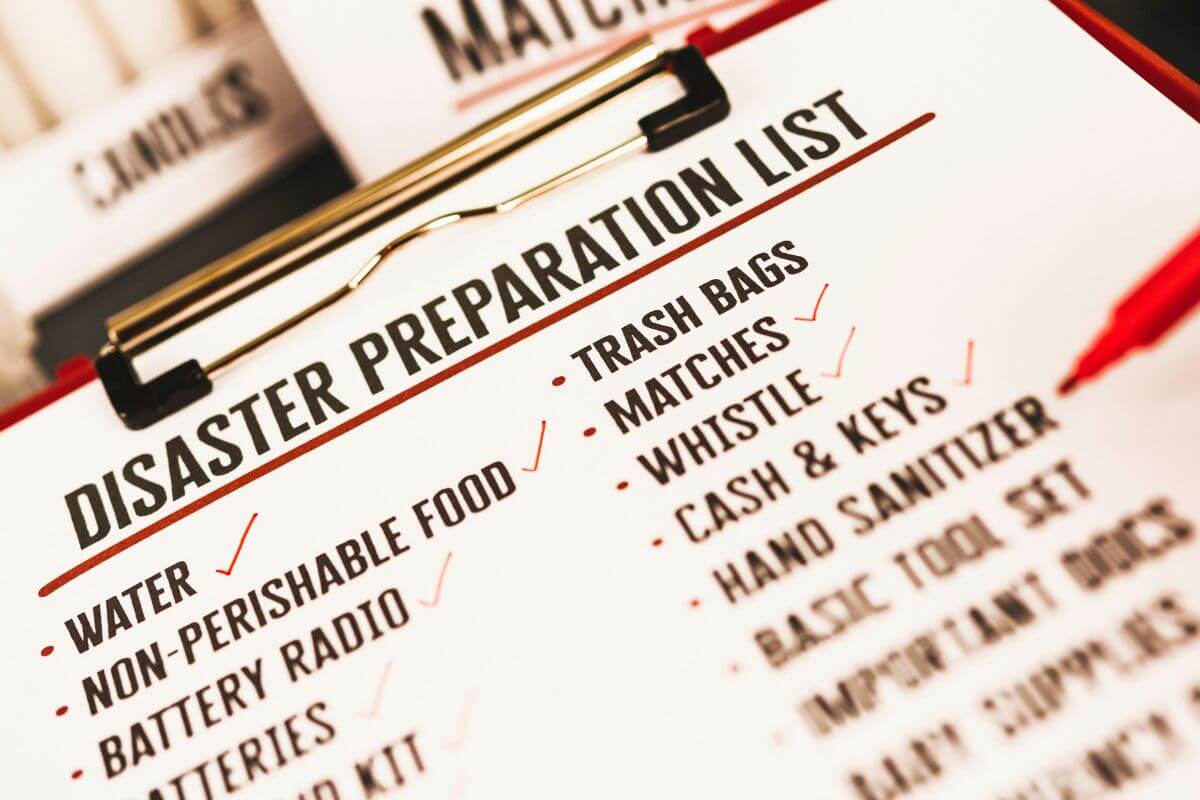
Montana is not immune to the possibility of natural disasters. Therefore, it is essential to be prepared and have a plan in place to ensure the safety of oneself and loved ones in the face of such emergencies.
Montana follows natural disaster guides set by the Montana Department of Disaster and Emergency Services (DES) and the Federal Emergency Management Agency (FEMA).
Their guidelines emphasize the importance of preparedness planning and following severe weather safety protocols, including fire-safe practices, evacuation orders, and disaster warning signs.
Creating an emergency plan is paramount. It covers designating a safe meeting place for your family and establishing an out-of-state contact person.
Packing an emergency survival kit is also a must. Here, you can include essential items such as non-perishable food and water, medicines, flashlights, whistles, and a battery-powered radio.
Stay informed about common natural disasters in Montana, and familiarize yourself with emergency warning systems.
It is crucial to explore insurance coverage options for natural disasters in Montana. Seek guidance from local authorities and consult resources like the Montana Department of Disaster and Emergency Services (DES) or FEMA.
They can provide comprehensive all-hazards emergency management plans, educate you on emergency policies, and offer insights into emergency preparedness knowledge.
By taking proactive steps towards preparedness, staying informed through the right educational resources, and working with local authorities and disaster relief organizations, we can ensure our safety and mitigate the impact of natural disasters in stunning Montana.
Montana: Natural Disaster Aftermath and Recovery
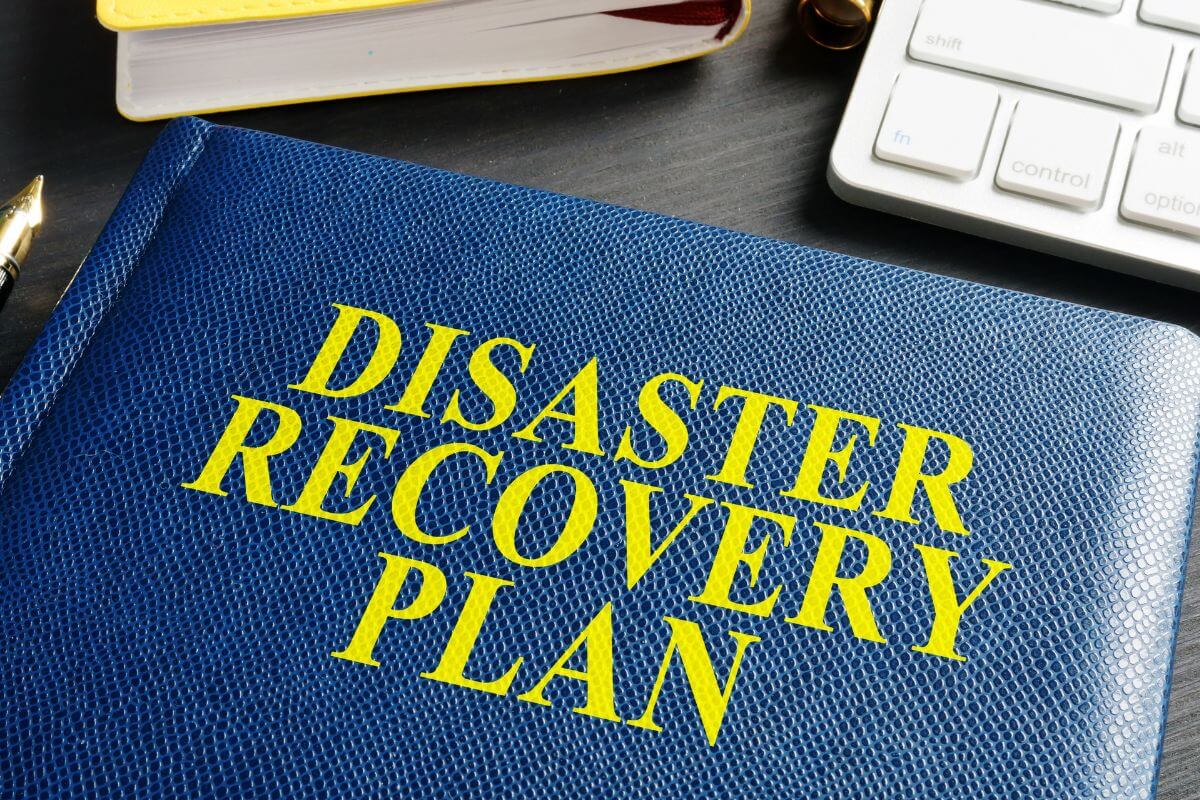
After a natural disaster strikes Montana, the aftermath can be overwhelming for affected communities. The recovery process entails a collective effort to rebuild and restore normalcy.
Montana deploys search and rescue operations to locate and assist survivors, ensuring their safety. Emergency sheltering is provided to those displaced from their homes, offering them temporary refuge.
Debris removal becomes a priority to clear roadways and public spaces, allowing for the restoration of critical infrastructure.
This involves the arduous task of removing fallen trees, damaged buildings, and other debris that could impede recovery efforts.
Public safety measures are implemented to mitigate risks and prevent further harm, ensuring the well-being of both residents and rescue workers.
The state’s recovery phase for natural disasters involves numerous resources and programs for individuals, businesses, and communities.
Volunteer Organizations Active in Disaster (VOAD) and the American Red Cross play vital roles in providing immediate relief and support in Montana.
Financial assistance, grants, loans, and resources are offered to aid in rebuilding infrastructure, housing, and other essential services.
Montana understands the importance of preparing for future disasters. Disaster assistance programs, guides, and relief organizations work tirelessly to provide communities with valuable resources and aid.
By coming together and leveraging these available resources, Montana’s affected communities can begin the journey toward healing and rebuilding stronger than before.
Montana Natural Disasters Final Thoughts
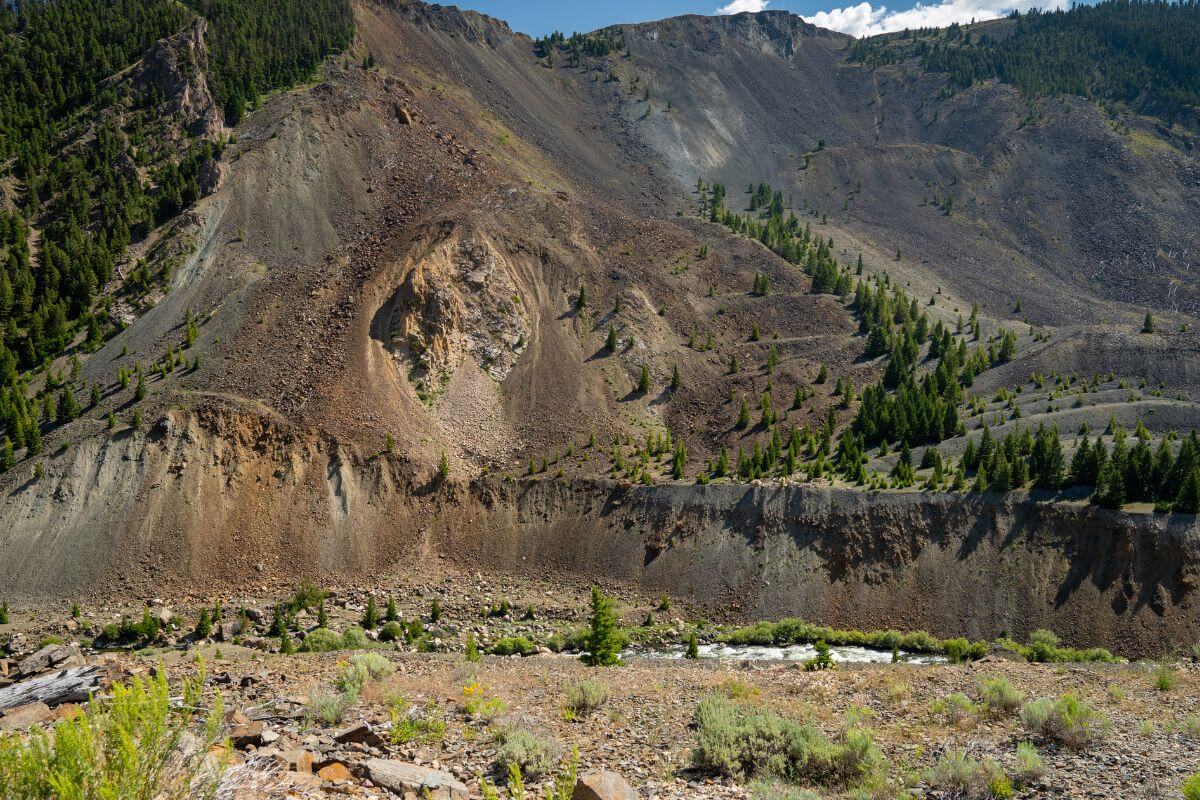
When it comes to natural disasters, Montana has its fair share of vulnerabilities. From flooding to earthquakes, the state experiences a range of impactful events.
Through Montana’s collaboration with emergency management experts, provision of emergency kits, and implementation of education school emergency policies, visitors and residents can enjoy all the state has to offer while prioritizing safety.
With the right measures in place, the magnificence of Montana can still be appreciated, even in the face of nature’s wrath.
Montana Natural Disasters FAQs
1. Does Montana Have Tornadoes or Hurricanes?
While Montana doesn’t typically experience hurricanes like coastal regions, it does have occasional tornadoes.
According to historical data from the National Oceanic and Atmospheric Administration, Montana sees an average of around 5 to 10 tornadoes per year.
So while tornadoes are not as prevalent in Montana as they are in some other states, they are still natural disasters that residents and visitors should be aware of and take precautions for.
2. Are Earthquakes Common in Montana?
Yes, they are. Small earthquakes occur in the region at an average rate of 7-10 per day. While most of these earthquakes are minor, Montana has experienced some notable seismic events in the past.
The Hebgen Lake earthquake in 1959, for example, had a magnitude of 7.3 and caused significant damage in the area.
The state has an average earthquake hazard score that reflects the potential for seismic events and related risks.
3. Does Montana Get a Lot of Storms?
Well, the answer is yes! Montana experiences a variety of storms, ranging from winter storms and blizzards to thunderstorms during the fall.
During the winter months, Montana sees its fair share of snowfall, with heavy snowstorms and blizzards sweeping across the state.
These winter storms can bring significant amounts of snow, creating a winter wonderland but also posing challenges for transportation and daily life.
4. What Are the Risks of Living in Montana?
Living in Montana comes with its fair share of natural disaster risks. One of the primary risks in the state is the occurrence of wildfires. With its vast forests and dry climate, Montana is prone to wildfires, especially during the summer months.
To minimize the risk of danger from natural disasters, it is essential to follow standard safety guidelines such as creating defensible space around your property, practicing proper prevention measures, and staying updated on alerts and evacuation procedures.
5. How Safe Is Montana From Natural Disasters?
When it comes to natural disasters, Montana is not immune. The state faces a variety of threats, including wildfires, floods, and severe winter storms.
These disasters can pose risks to both life and property. However, by implementing effective mitigation strategies and preparedness measures, residents can help minimize the impact of these events.
To discover more amazing things about Montana, check out these insightful reads:
- LGBTQ+ Support in Montana
- LGBTQ Groups in Montana
- Professional Teams in Montana
- Discovering if Montana Is the Worst State
- https://nca2014.globalchange.gov/report/regions/midwest
- http://dnrc.mt.gov/divisions/forestry/fire-and-prevention
- https://readyandsafe.mt.gov/Prepare/Floods
- https://www.weather.gov/
- https://mbmg.mtech.edu/
- https://www.drought.gov/drought/states/montana
- https://droughtmonitor.unl.edu/
- www.weather.gov
- www.noaa.gov
- https://des.mt.gov/Recovery/Recovery-Program
- https://commons.wikimedia.org/wiki/File:Hebgen_Lake_House.JPG

